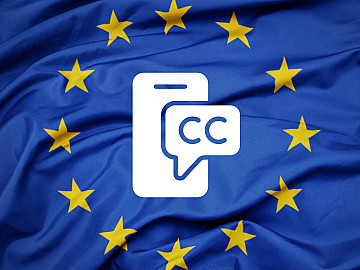The quest for optimal reach and revenue for content creators on YouTube is an ongoing challenge.
Dubbing offers a HUGE opportunity for creators to establish new international audiences, achieving more views and ad revenue alike.
However, the ad revenue earned from one language is not equal to that of another, leading YouTubers to attempt to unravel the complex puzzle of global languages and discover which has the highest value on the platform.
This is where YouTube CPM (Cost Per Mille) comes in.
We also have a video walkthrough of this topic:
What is YouTube CPM?
YouTube CPM is the cost per 1000 ads that an advertiser places on a YouTube channel, not the estimated earnings of a YouTuber per 1000 views. This is mainly due to creators only receiving 55% of the profit YouTube makes on ads. Therefore, CPM actually represents your value, not your earnings.
CPM = Cost per 1000 ads for advertisers.
RPM = Expected revenue for creators.
Potential YouTube CPM is generally broken down by language or niche… But that’s the problem.
Both language AND niche need to be calculated together to represent potential earnings accurately. If each niche were equally popular in different countries, this wouldn’t be such an issue.
Fortunately, we have found an alternative method to obtain accurate information on which languages will earn the most ad revenue: High-Spending audiences.
The Dubbing Dilemma: Views or Profit
Many businesses and content creators will assume that the most valuable dubbing languages are the ones most spoken.
More views = more money, right?
Wrong.
What you earn from 1000 ad views in the USA will be far superior to 1000 ad views in India. Advertisers will spend more for their content to be promoted in higher-spending territories. However, if that lower-spending area has a much larger population, the larger audience might still be the best choice for your content.
Ultimately, whether you target the largest or most valuable audience is a decision that must be weighed. The niche of your content and the intended goals for your videos will usually be the key factors that lead to a conclusion.
Why Prioritise High-Spending Audiences?
A tech business looking to promote its brand on YouTube with informative videos will be looking for the right audience, i.e., one with money to burn on tech. For this reason, the list of countries with the most spent on video advertising will reflect a wealthier audience and a better dubbing choice.
A content creator who makes videos about tech will likely take the same course of action. They want the tech giants to advertise on their content, and they will earn more if that content is made for a wealthier audience.
Why Prioritise the Largest Audiences?
A business selling a $0.99 app has more options. Due to their low-cost product, more of the world can become a customer, so the larger the audience, the better.
Similarly, content creators are often looking for as many views as possible. This is so they can promote their other ventures to charge more for influencing or to sell more merchandise.
So, what’s the goal for your content?
If you’re reading this, you likely have YouTube CPM on your mind. This suggests you’re here to increase your YouTube profits.
But hold on, there’s a BIG ISSUE we need to discuss.
The Problem with CPM on YouTube & Beyond
YouTube CPM refers to the average cost of placing 1000 ad views.
This is usually the metric content creators will use to determine which languages are more valuable on a platform than others, and many will search for an ordered list of YouTube CPM per language.
However, CPM is far more complicated than these lists will have you believe. The niche and quality of your content will affect your YouTube CPM per language, meaning each creator will earn a different amount.
A quick Google search will provide you with a plethora of lists… each containing a different selection of top languages and their respective values. The reality is that there are too many factors to consider, and the only true way to discover your CPM is after you have already dubbed your content.
Choosing the best languages must then be done without the use of probable CPM. This is the dubbing dilemma: Do you choose based on audience size for that language or the potential value of the markets where that language is spoken?
Fear not; there is another way to determine high-spending YouTube audiences other than a quick (and inaccurate) Google search.
The Top 10 Dubbing Languages (For Ad Revenue)
At Voquent, we wanted to solve the problem of using YouTube CPM lists so our dubbing clients could make a genuinely informed choice when choosing languages.
The key figures determining high-spending YouTube audiences are gross domestic profit (GDP) and video advertising spend.
Here, we’re using Statista data from 2022 combined with the number of speakers for all the top countries to calculate the total video ad spend for a language in US Dollars.

This list shows which languages video advertisers spend more money on, earning you more money through ad revenue:
The Top Languages List:
- English – $62.13 per person ($93B spent across 1.5 Billion speakers)
- Japanese – $37.6 per person ($4.7B spent across 125 million speakers)
- Korean – $34.36 per person ($2.4B spent across 81.5 million speakers)
- German – $31.62 per person ($3.95B spent across 117 million speakers)
- Italian – $24.24 per person ($2.1B spent across 66 million speakers)
- French – $14.44 per person ($6.6B spent across 277 million speakers)
- Portuguese – $8.97 per person ($2.2B spent across 245 million speakers)
- Spanish – $7.65 per person ($4.3B spent across 563 million speakers)
- Arabic – $2.31 per person ($966M spent across 417 million speakers)
- Hindi – $1.89 per person ($1.2B spent across 636 million speakers)
Many conclusions can be drawn from this information:
- As English-speaking countries, such as the US and the UK, have exceptionally high gross domestic profit, video advertisers spend the most money on content in this language.
- German language dubbing is a great way to penetrate the European market. Not only is German the most commonly spoken language in the UN, but advertisers spend the 4th largest budget on German content.
- While Hindi-speaking audiences rank 10th on the list, their population is greater than those of Arabic-speaking audiences. You may earn less per 1,000 views if only considering CPM, but the size of the population means more can be earned overall. This is another reason why YouTube CPM calculations are misleading.
The generic YouTube CPM lists you find online are predictions based on an algorithm we don’t have access to. Calculating GDP and ad spend is a solid way to determine the value of a language on YouTube. This way, you will know which languages to choose when dubbing.
So, the more advertisers are willing to spend, the higher the YouTube CPM for that language.
But wait!
It’s not quite as simple as that.
Other Considerations
Potential ad revenue is not the only aspect to consider when deciding which languages will work best for your content. This is something YouTube CPM does not take into account.
Niche
The niche of your content is a key factor in deciding which languages you should dub your content in, as some video topics are more popular in certain areas than others.
For example, comedy is infamously complex for localisation. What is considered funny in the UK will probably not be very popular in Japan. For this reason, comedy channels will usually decide on audiences that are similar to their current audience. If your Spanish content is popular in South America, then Portuguese is probably the best choice, so Brazil’s huge audience will be able to enjoy your videos, too.

Some research is therefore necessary before localising videos to confirm that the type of content you make is popular in that region.
Sub-Niche
Sub-niche will also affect how much you earn in ad revenue.
Similarly to lists of language CPMs found on the internet, niche CPMs can be just as complex and misleading. Each niche is made up of various sub-niches with varied values. ‘How to make money online’ is, according to one source, the most popular and highest-earning niche on YouTube. However, within this niche, ‘cryptocurrency’ is considered far superior to ‘career advice’, so your content may be a popular niche but on the lower end of the sub-niche scale.
Searching for similar successful content in your desired language is one way to determine if your niche and language pair up.
Discovering how frequently a region searches for the keywords you use can also show if your niche is popular in this region.
But niche isn’t the only consideration.
Platform
Some platforms are more popular in certain regions than others, and some platforms are completely BANNED altogether.
If your goal is to dominate YouTube, Chinese Mandarin dubbing isn’t a great choice, as the platform is banned in China. However, it’s an essential language for big brands that release their content across multiple platforms.
Interestingly, YouTube is a particularly popular platform in Indonesia. In fact, Indonesia watches the 4th most YouTube in the world, and the Asia/ Pacific region beats out Europe and North America for time spent on the platform.
Indonesian might not have been a language on your radar, but understanding your audience and the way they consume media is important to making the right dubbing choices.
Our language reference guides can help you out here. Get in touch and book a free channel review, and we can share our years of localisation experience with you.
Conclusion
While YouTube CPM lists and calculators are a flawed method for choosing dubbing languages, video advertising spend for content in that language is an incredible indicator of language value on YouTube.
The more advertisers are willing to spend on an audience, the more you will earn from ad revenue.
It’s our mission to take our clients to the global stage, planning out a dubbing strategy that increases profits with your niche in mind.
Contact us for a free channel review and access to our language reference guides, complete with all the relevant figures, whether your goal is for increased views, boosted revenue, or brand awareness.
Discover our Dubbing Packages
YouTube CPM FAQ:
Q. What is CPM on YouTube?
A: Many content creators misunderstand what CPM is on YouTube.
CPM (Cost Per Mille) is the average cost of placing 1000 ads on a YouTube channel. This does not represent what the creator earns per 1000 views, as some views may not have an ad placed on them, and this figure is before YouTube takes their 45% cut of the ad revenue.
A more accurate measurement of potential earnings for creators is RPM (Revenue Per Mille).
Q. What does CPM stand for on YouTube?
A: While CPM stands for Cost Per Mille (the cost of placing 1000 ads), RPM stands for Revenue Per Mille (the creator’s earnings from 1000 ads).
Q. What is the average YouTube CPM?
A: When you search online for the average YouTube CPM, you will discover a variety of lists. Each list displays language and niche CPM in different orders with different values.
These typically range from $3 to $15.
There are too many discrepancies amongst these lists to know for sure what the average YouTube CPM actually is, and therefore, CPM is not a reliable metric to predict YouTube earnings.
Q. How to Increase CPM on YouTube
A: Here are the top 3 ways to increase your CPM on YouTube:
Creating content within the most popular niche of the language you speak will give you the highest CPM. However, each world region has different content preferences.
Releasing content in languages spoken by high-spending audiences will allow advertisers to place higher-paid ads on your content, such as English, Japanese, and Korean.
Creating advertiser-friendly content will allow more ads to be placed on your videos, earning you more ad revenue. Think to yourself, would an advertiser benefit from their ad being displayed on your videos?
Q. Which country has the highest YouTube CPM?
A: If you do enough research on YouTube CPM by country, you will discover that there are many online lists, each displaying different answers in different orders. The USA, Norway, and Australia are frequently at the top of these lists.
However, there is too much variation to know exactly which country comes out on top.
Researching which countries have high-spending audiences is a great way to predict which languages you should release content in. For example, as audiences from the USA spend more, advertisers are happy to place expensive ads on English-speaking content.
The most expensive ads are placed on content in the following languages: English, Japanese, Korean, German, and Italian.
Discover our Dubbing Packages
Sometimes we include links to online retail stores such as Amazon. As an Amazon Associate, if you click on a link and make a
purchase, we may receive a small commission at no additional cost to you.

















